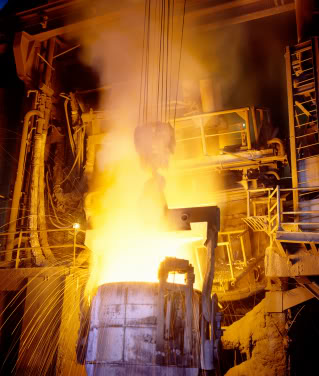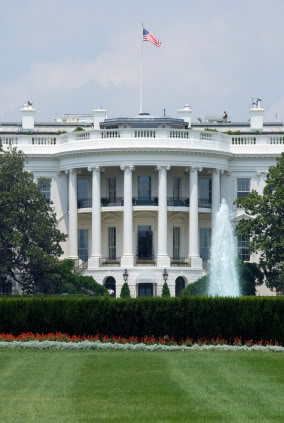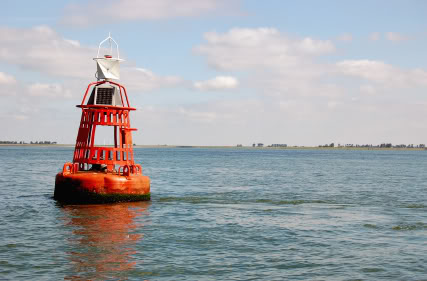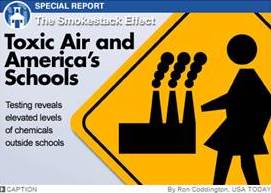Electronic Arc Furnace (EAF) Steelmaking Area Source MACT Revisions
U.S. EPA is proposing amendments and taking direct final action on those amendments to 40 CFR Part 63, Subpart YYYYY – National Emission Standards for Hazardous Air Pollutants for Area Sources: Electric Arc Furnace (EAF) Steelmaking Facilities. U.S. EPA is taking this dual action in the event that adverse comments are received for the amendments that are being published as direct final rules. Subpart YYYYY was originally issued by U.S. EPA on December 28, 2007. The rule established emission limits for particulate matter (PM) as a surrogate for metallic hazardous air pollutants (HAPs) and pollution prevention standards for the control of mercury (Hg) emissions for electric arc steelmaking facilities that are considered area sources of HAP emissions. The amendments clarify specific regulatory language, make the PM testing requirements 
ALL4 Ambient Group Attends Modeling Conference
On October 8 and 9, 2008, ALL4’s Ambient Group attended the 9th Conference on Air Quality Modeling in Research Triangle Park, NC, hosted by U.S. EPA. The conference provided an update on the latest developments in air quality modeling and represented a public forum for discussion on how air quality models can be used for new air permit applications in the future. Speakers from U.S. EPA, state environmental agencies, and private companies presented on a variety of topics, including the following future developments related to Prevention of Significant Deterioration (PSD) air quality modeling:
- Meteorological Data Representativeness: Obtaining a complete set of representative meteorological data for use in an air quality modeling evaluation continues to be challenging for many facilities. U.S. EPA discussed approaches to address a lack of complete data within existing meteorological data sets. U.S. EPA also discussed the AERSURFACE preprocessor, which can be used to estimate micrometeorological variables as part of a meteorological data representativeness evaluation.
- PM2.5 Modeling: Issues related to modeling
PM2.5 emissions and the proposed PM2.5 PSD ambient concentration standards were discussed. U.S. EPA has initiated an extensive process to address the challenges associated with PM2.5 modeling, and is developing guidance for those facilities that are required to model PM2.5 emissions through the New Source Review (NSR) permitting process.
PADEP Announces Mandatory PM Testing for Coal-fired Electric Generation Units
On December 4, 2008, PADEP Deputy Secretary Tom Fidler announced that PADEP will be notifying owners of coal-fired Electric Generation Units (EGUs) in Pennsylvania that they will be required to conduct emission tests to measure emissions of particulate matter (PM). The announcement was made during his presentation at the PA Chamber Quarterly meeting with PADEP. The PM testing initiative was initiated by PADEP Acting Secretary John Hanger and is based on his concern that current PM emissions data is not available for all coal-fired EGUs within the state. PADEP is intending to notify all owners of coal-fired EGUs before the end of 2008 of the requirement to conduct PM testing before the end of 2009. Testing will be required for filterable PM, PM10 (including condensible back-half), and PM2.5 including condensible back-half in conformance with the latest approved (or proposed for PM2.5) U.S. EPA test methods. The results of the tests will be used to determine each unit’s compliance with applicable PM limits and/or to ensure that accurate PM emissions data is provided for future AIMs reports. At this point it is not anticipated that the PM emissions information will be used for standards setting. PADEP will ultimately require PM testing of all coal-fired EGUs every 2 years through revisions to the EGU’s Title V operating permit.
Bush Administration and U.S. EPA Under Scrutiny
The Bush Administration and U.S. EPA continue to be scrutinized in the press. Most recently, on December 7, 2008, the Philadelphia Inquirer published the first of a four part series of articles titled “Smoke and Mirrors – The Subversion of the EPA.” The articles can be accessed at www.philly.com/epa. Of particular interest is the second article in the series, published on December 8, 2008, which examines several air pollution-related court rulings including the Clean Air Interstate Rule (CAIR) and New Source Review (NSR). The article takes a critical look at several rules that have been challenged by both
Please note that ALL4 does not have an opinion regarding the articles, but finds that the content of the articles and their timing may be of interest to the recipients of 4 the Record.
U.S. EPA Amends SPCC Regulation Definition of “Navigable Waters”
On November 26, 2008, U.S. EPA issued a final rule to amend the Spill Prevention, Control, and Countermeasure (SPCC) regulation in response to a court decision that vacates the definition of “navigable waters” that U.S. EPA had promulgated in 2002. The court decision and U.S. EPA’s rule restores the definition of “navigable waters” that was initially promulgated in 1973.
The SPCC rule was originally promulgated on December 11, 1973. On July 17, 2002, U.S. EPA issued a final rule amending the SPCC rule at 40 CFR Part 112 which included revisions to broaden the definition of “navigable waters.” For example, the July 2002 definition added specific listings of wetlands, mudflats, wet meadows, and other areas, while the original definition listed only lakes, rivers, streams, and navigable waters defined by judicial decisions prior to 1972.
The American Petroleum Institute, the Petroleum
This change could, in certain cases, reduce the requirements for a facility to prepare SPCC Plans and/or Facility Response Plans (FRPs), depending on facility-specific location and regulatory interpretation of the terms in the definition.
USA Today Article “Toxic Air and America’s Schools”: How is Your Company Depicted?
If your company reports Toxics Release Inventory (TRI) data to U.S. EPA and you have not seen the recent USA Today article and interactive website entitled “The Smokestack Effect: Toxic Air and America’s Schools,” you probably should. Your company may have been implicated as contributing to a health risk for children in schools. According to the article, USA Today partnered with the University of Massachusetts – Amherst Political Economy Research Institute to develop a computer simulation that predicts ambient concentrations of TRI pollutants at schools from a screening level perspective.
The simulation uses existing U.S. EPA TRI data, air dispersion models, and default pollutant dispersion parameters. The air quality modeling that supported the analysis was based on the Risk Screening Environmental Indicators (RSEI) which uses the outdated Industrial Sources Complex Long Term (ISCLT) air dispersion model, the 2005 TRI data, and a SIC-based set of default stack heights and flow data. For example, for the pulp and paper industry, the default stack height is about 23 meters with a 10 m/sec exit velocity.
While U.S. EPA cautions against the use 

 PM2.5 emissions and the proposed PM2.5 PSD ambient concentration standards were discussed. U.S. EPA has initiated an extensive process to address the challenges associated with PM2.5 modeling, and is developing guidance for those facilities that are required to model PM2.5 emissions through the New Source Review (NSR) permitting process.
PM2.5 emissions and the proposed PM2.5 PSD ambient concentration standards were discussed. U.S. EPA has initiated an extensive process to address the challenges associated with PM2.5 modeling, and is developing guidance for those facilities that are required to model PM2.5 emissions through the New Source Review (NSR) permitting process.